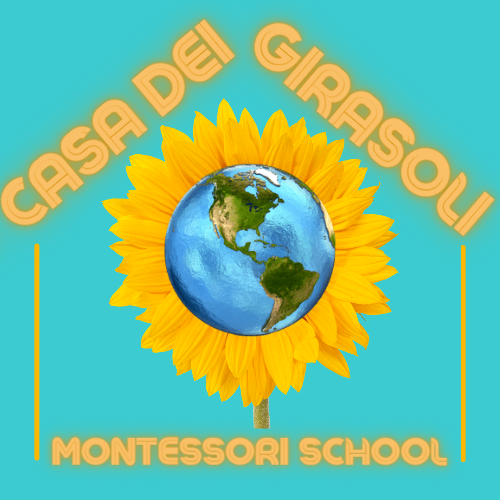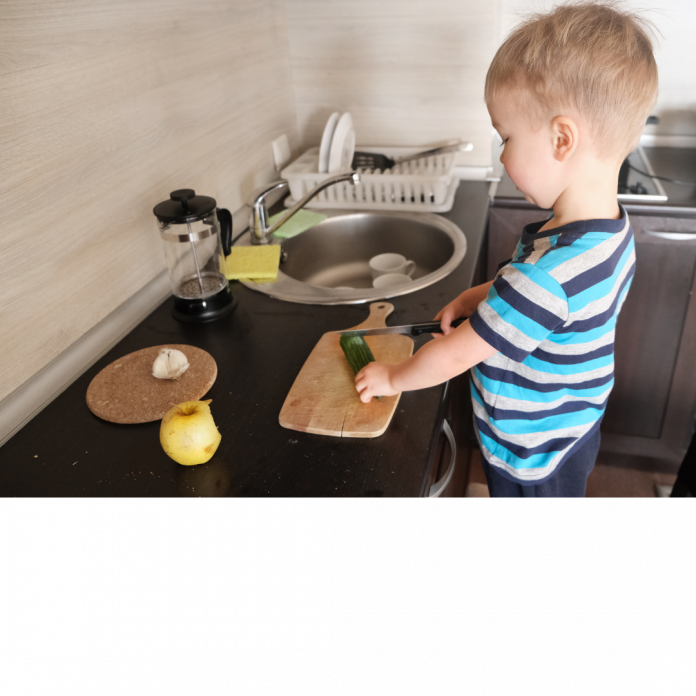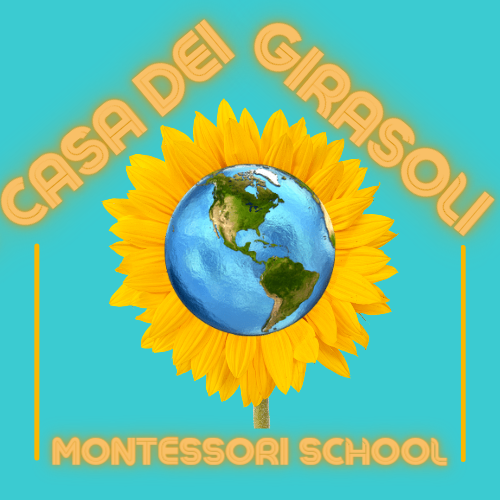Before becoming a parent, you have ideas and “plans” in your head of how your life will look. As most of us who have become parents know, 95% of those ideas fly out the window when you welcome your new one. However there was one plan that I can proudly say I stuck to, and that was to have my child(ren) have a Montessori education whenever possible.
Fast forward to my first child turning three. As the (self-imposed) pressures mounted to put her in a pre-school, I knew I did not want to send her just anywhere. She was not fully toilet-learned, mostly non-verbal and very attached to us. I was fortunate to find a Montessori school nearby and immediately scheduled a tour. What I saw far surpassed my ideas and experiences of a preschool classroom and I had such a feeling of warmth I immediately paid the deposit. She is currently approaching the age of 7 and I’m still grateful every day I was able to make that decision with her. So, as a parent of children moving through the Montessori classrooms, my list-making Type-A list personality would love to share with you what I’ve witnessed and come to learn and adore about a Montessori curriculum.
- INDEPENDENCE: This is what hooked me and many other parents in the beginning. Who doesn’t love when their child can complete tasks by themselves?! How great is it when they can get dressed on their own without you wrestling their arms into sleeves?! Many Practical Life lessons teach basic skills and self care such as pouring, using tongs, scooping, buttoning, sorting, sewing, etc. Mastering basic fine motor skills help lay the foundation for learning academics and give the child the confidence to focus on that. The child that does not have to worry that Mom isn’t there to put on their shoes can then feel ready to tackle letter sounds. I have found that adopting this Montessori idea in my home has been challenging at times but worth every minute. Allowing them to take on tasks I sometimes think are above their ability gives them the chance to try something by themselves and I’m often pleasantly surprised at what they can do!
- FREEDOM WITH STRUCTURE: If you ever have the opportunity to set foot inside a Montessori classroom during the work cycle, you see how children move freely throughout the classroom, selecting “work” (lessons) based on their work plan, or simply what they are interested in. However there are limits to what they can do, when and how. Certain work MUST be done at a table while others on a mat. They must take the work off the shelf, complete it fully, then return it to its resting place. Any lessons selected must be done appropriately, while still giving space for the child to make mistakes attempting to complete them. Lessons that are past their cognitive ability are available to them, but they must work up to that point. For instance the child that shows interest in the brightly colored bead cabinet must first learn their numbers. Teachers politely redirect the child that attempts to play with the beads; something that sounds like “This is the bead cabinet and you must know your numbers and multiplication tables before you can use this. Let’s work on your sandpaper numbers first!”
- MULTI-AGE CLASSROOMS: Speaking of work that is past their ability, Montessori classrooms are not broken up into grades but age groups. The Infant/Toddler classroom is ages 0-3, the Children’s House is 3-6 and Lower Elementary 6-9 (these 3 year age groups continue through the middle school years). This gives the opportunity for the older children in the classroom to take on leadership roles, guide the younger children through the classroom and at many points become the teacher to the younger child. This teaches leadership, caretaking and above all, empathy.
- DEEP UNDERSTANDING/SELF-EXPLORATION: We all have heard two year olds sing the A-B-Cs, right? It’s adorable and many are impressed by this; as they should be! But does the average two year old know what the letters are, or are they simply regurgitating what they have heard? Don’t get me wrong, this is very important, but what is especially distinct about a Montessori classroom is how children gain a deep understanding of what they are learning. Letter sounds are taught before letter names- anyone ever wonder why the letter W is called “Double-U” instead of the “wuh” sound it makes?! The foundations of math are taught using Number Rods, where each rod becomes larger as the numbers progress up. They see, feel and experience how five is larger than four. And then we have those really special opportunities for children to learn about what actually interests them-SHOCK! If a child is interested in lions, they are encouraged to utilize the tools of the classroom to complete “big work” to learn all about lions. They use children’s encyclopedias to research where lions live, how they find food, what animal family they are a part of, the lion lifestyle, etc. In this child’s special interest, they explore geography, life cycles, the food chain, and so much more. They are excited to learn which gives them the confidence to explore other areas of academic growth.
- RESPECT AND EMOTIONAL SUPPORT: This is a biggie for me. School is 100% important, but for me, my children need to feel loved and supported so they can achieve elsewhere (take a minute to Google ‘Maslow’s Hierarchy of Needs’!). They also need to have someone model this behavior for them. Yes, this is not something that’s special to Montessori- there are COUNTLESS teachers across this country that love and adore their students deeply and they all should be revered for what they do. What sets a Montessori teacher a step above to me is that emotional teachings and respect are a part of the curriculum. The student that steps on another student’s work on a mat is redirected and expected to address their actions with the other child before moving onto their original goal. Sometimes, the focus of a lesson isn’t so much what day it is, but how we all have “big feelings” and how we can properly express them using words or safe actions. Having my children in a Montessori classroom without a standardized curriculum allows that freedom.
- MEETING CHILDREN WHERE THEY ARE: A Montessori child’s learning environment is based on what they need and want, not by what is outlined for them. Developmental milestones are taken into account, but the understanding that academic achievement and milestones are oftentimes fluid, the Montessori method allows teachers to meet children where they are and gently nudge them forward. A real life example: A standard material in Montessori classrooms are Continent Puzzles. Each country is it’s own piece and children must reassemble it (hello fine motor and problem solving skills!). My child selected the puzzle of Africa one week for her work plan. She sat with that puzzle for DAYS. Looking around the room, asking for help (which for her is “do it for me!”), clearly struggling. This wasn’t your average overwhelmed struggle with which piece goes where, but the “I have no idea where to start” type of situation, and even when other students showed her where pieces went she could not replicate it. After brainstorming with her teachers, I brought up how when she completes puzzles at home, she gravitates to the outlined puzzles versus jigsaw puzzles. I saw a light go off in their heads and they pulled out the outline of the puzzle that had the countries labeled and their shapes. They took a few minutes to show her that each country has an outline. By the end of that work cycle, she had completed the entire puzzle, in record time, and could take it apart and put it back together. By them realizing her current skills, they were able to push a little further, and most importantly, my child was SO PROUD of herself. She felt so accomplished she pulled another continent puzzle off the shelf.
- PARENT COMMUNITY: I am so fortunate to be a part of a Montessori classroom that sees parents as the first “teachers,” and classroom teachers as facilitators. If parents have questions, there is no judgment but simply suggestions of what they see could be supported. While there is no homework, there are very practical ways they offer assistance to make the transition to and from school easier. If it’s something as easy as ditching the Pull-Ups during the day and switching to regular underwear, that’s something we as parents can get behind but maybe did not realize was an option. Or if it’s stepping back and letting our six-year-old cut their own apple using a specialized cutter. Or it’s using real language in the house instead of “baby talk” to facilitate proper language development. But here’s the big part. Dr. Maria Montessori really believed in supporting the whole child, and a part of that is understanding that *SHOCK* MISTAKES HAPPEN. The pressure to be the “Perfect Parent” thanks to real life comparisons and social media is REAL. But mistakes are a part of life. Our teachers teach the students and parents alike that mistakes happen, it’s how we approach them that shapes our learning. A common Practical Life lesson involves pouring something from one vessel to another. If there is a spill, there is no scolding but a simple reminder that the spill must be cleaned up. I have been encouraged to own up to my mistakes with my children, and I’ve seen how it’s made a difference in how they learn. It’s so simple, but so hard, and I’m BEYOND grateful for our teachers encouraging us to be HUMAN with our kids.
Montessori is an educational pedagogy, but I’ve found it’s a lifestyle philosophy that is so simple to adapt to my home while my children get an education. If this sounds appealing to you, find your local Montessori school (hi Casa dei Girasoli!!) and schedule a tour. Even if you find it’s not for you, you may learn a thing or two!




